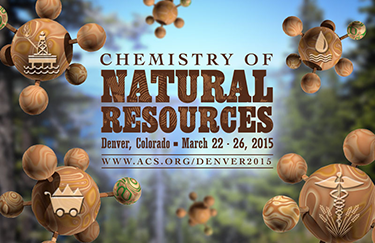Mar 23 2015
A pair of air pollutants linked to climate change could also be a major contributor to the unparalleled rise in the number of people sneezing, sniffling and wheezing during allergy season.

The gases, nitrogen dioxide and ground-level ozone, appear to provoke chemical changes in certain airborne allergens that could increase their potency. That, in combination with changes in global climate, could help explain why airborne allergies are becoming more common.
The findings will be presented today at the 249th National Meeting & Exposition of the American Chemical Society (ACS), the world’s largest scientific society. The meeting features nearly 11,000 reports on new advances in science and other topics. It is being held here through Thursday.
“Scientists have long suspected that air pollution and climate change are involved in the increasing prevalence of allergies worldwide. But understanding the underlying chemical processes behind this phenomenon has proven elusive,” says Ulrich Pöschl, Ph.D., of the Max Planck Institute in Germany. “Our research is just a starting point, but it does begin to suggest how chemical modifications in allergenic proteins occur and how they may affect allergenicity.”
About 50 million people in the United States suffer from nasal allergies, according to the American College of Allergy, Asthma and Immunology. And those numbers are on the rise.
In previous work, Pöschl; Christopher Kampf, Ph.D.; Manabu Shiraiwa, Ph.D.; and colleagues at the Max Planck Institute explored how allergy-causing substances are altered in the air. Building on that work, they decided to dig deeper into how that happens and examine how traffic-related air pollutants could increase the strength of these allergens.
In laboratory tests and computer simulations, they studied the effects of various levels of ozone and nitrogen dioxide on the major birch pollen allergen called Bet v 1.
The researchers determined that ozone — the main component of smog — oxidizes an amino acid called tyrosine that helps form Bet v 1 proteins. This transformation sets in motion a chain of chemical reactions that involves reactive oxygen intermediates and can bind proteins together, altering their structures and their potential biological effects. When this occurs, Kampf says the cross-linked proteins can become more potent allergens.
Pöschl’s team also found that nitrogen dioxide, a component of automobile exhaust, appears to alter the polarity and binding capabilities of Bet v 1 allergenic proteins. This, in conjunction with the effects of ozone, the researchers predict, may enhance the immune response of the body to these particles, particularly in humid, wet and smoggy environments.
The scientists plan to identify other modified allergenic proteins in the environment and hope, in collaboration with biomedical researchers, to study their effects on the human immune system, which may also be affected by other physiological factors.
“Our research is showing that chemical modifications of allergenic proteins may play an important role in the increasing prevalence of allergies worldwide,” Kampf says. “With rising levels of these pollutants we will have more of these protein modifications, and in turn, these modifications will affect the allergenic potential of the protein.”
The researchers acknowledge funding by the Max Planck Society.
The American Chemical Society is a nonprofit organization chartered by the U.S. Congress. With more than 158,000 members, ACS is the world’s largest scientific society and a global leader in providing access to chemistry-related research through its multiple databases, peer-reviewed journals and scientific conferences. Its main offices are in Washington, D.C., and Columbus, Ohio.